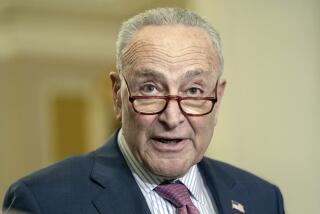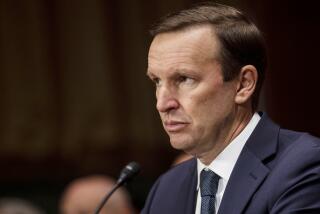Panic-Spending Antidote
- Share via
Companies making everything from a $7,655 chemical agent detector to a $3,770 respirator are lining up at the federal trough, urging Health and Human Services Secretary Tommy G. Thompson to use some of the $18 billion in new anti-terrorism money to buy their gadgets. Announcements Monday that Senate Majority Leader Tom Daschle’s office had received a letter containing anthrax spores and that new cases had been diagnosed elsewhere can only increase the pressure to spend.
The challenge facing Thompson and other agency heads will be to make sure panic doesn’t lead straight to the pork barrel. To identify the projects that stand the best chance of protecting people at a reasonable cost, the administration will need to apply the sort of cost-benefit analysis the president must have studied in business school.
Economists first persuaded Washington to apply this approach under the 1936 Flood Control Act, which required engineers to show that a project was likely to cost less than the damage it would prevent.
Now such analysis could be used to challenge questionable claims, such as water system operators’ request last week for $5 billion to upgrade treatment plants, even in the absence of evidence that any terrorist group has anything approximating the means to foul an entire city’s water supply. Or it might be applied to “food security,” another issue that moved into the spotlight after Sept. 11. Last week Sen. Richard Durbin (D-Ill.) pointed out that while the Food and Drug Administration has only 750 inspectors and a $260-million annual budget to safeguard a staggering 55,000 food processing plants, the Agriculture Department gets more than twice the money and has thousands more inspectors to oversee 6,000 meat and poultry plants.
Sometimes wise spending simply means asking common-sense questions such as, “How could the defense and intelligence establishments, with $300 billion a year to spend, lack spies with fluency in Arabic and Urdu?” Of course, no one will ever be able to quantify the chances that an immoral zealot will commit a given terrorist act. Still, the cautious discipline of cost-benefit analysis can be a powerful antidote to panic spending.
More to Read
Get the L.A. Times Politics newsletter
Deeply reported insights into legislation, politics and policy from Sacramento, Washington and beyond. In your inbox twice per week.
You may occasionally receive promotional content from the Los Angeles Times.










